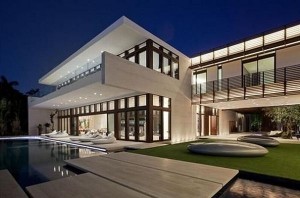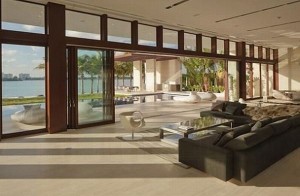Speculation fuelled the property boom – and predictable bust – of the last decade. Despite the continuing slump, are these high-flying gamblers back in business?
With United States housing foreclosures hitting all-time records in 2010, and no marked signs of a genuine recovery in the country’s real estate sector, it appears there are few reasons to be bullish about this market in 2011. However, try telling the grim news to Shlomi Alexander and Felix Cohen, the developers behind Miami Beach’s newest enclave – a sprawling super-mansion on the exclusive Indian Creek Island.
The 30,000 sqft home features the usual accoutrements; a high-security wine room, gold-flecked marble bathrooms, a pink sand beach imported from the Bahamas, and an interior waterfall inspired by a luxe Caribbean resort. The partners have invested close to $30M in the project so far, and hope to achieve a $60M purchase price when the home is listed in March. In spite of the economy, the developers are ebullient. In a recent article in the Wall Street Journal, it was reported that they believe the home, located at 3 Indian Creek Drive, will not only sell for near the asking price – but will have changed hands within a month of listing.
Such confidence is surprisingly optimistic, in light of recent history. The highest echelons of luxury real estate were hit hard by the financial crisis – from vast mansions and vacation homes to arguably the most exclusive of properties, privately-owned islands. A microcosm of the broader luxury real estate market, private islands carry a celebrity-fuelled allure that, pre-crisis, led to rapidly inflating prices and attempts to “flip” for profit by speculators. According to FarhadVladi, proprietor of the Hamburg-based firm Vladi Private Islands, this niche market quickly became an unsustainable bubble.
“Beginning in the early 2000’s, articles on private islands and their celebrity owners (or visitors) began to proliferate in the international media,” he said. “Thereafter, speculators became aware of islands. There were many attempts to purchase islands, often barren and without amenities, and sell them for two, even five, times the original purchase price. For many who tried to profit in this way, it did not end well.” According to Vladi, island speculation led to an untenable situation that peaked before financial crisis, after which many prices in his market came crashing back to earth. “Hardest hit were islands that were not necessarily habitable, just pure speculation,” he said. “It was, in a sense, a necessary correction.”
As for the luxury sector on America’s shores, many similarities can be drawn – with an additional pitfall. Few banks are willing to mortgage exotic assets like private islands, but they eagerly poured funds into the hands of developers for luxury estates and vacation complexes. Highly levered, these extravagant developments lived – and then died – on the easy availability of credit. Left unfinished and without solvent purchasers in sight, the results were catastrophic. Many projects were given back to lenders as developers filed for bankruptcy and just walked away. Has the new wave of luxury real estate speculators forgotten the panic of just a few years ago – or are new forces now driving this market upwards?
Only time will tell whether it was a worthwhile risk, but perhaps the mega-mansion created by Alexander and Cohen isn’t such a reckless venture. There are certainly a few reasons to support their optimism. In an increasingly stratified society, consumer markets thrive when catering to the very top – or the very bottom – of the income ladder. Middle America may have stagnated in a wasteland of high unemployment and mounting personal debt, but Wall Street closed the decade with two straight years of record profits. With the highest wealth disparity in America’s history putting 25% of the nation’s income into the hands of the top 1%, speculation on a $60M estate may not be a bad investment, after all.




